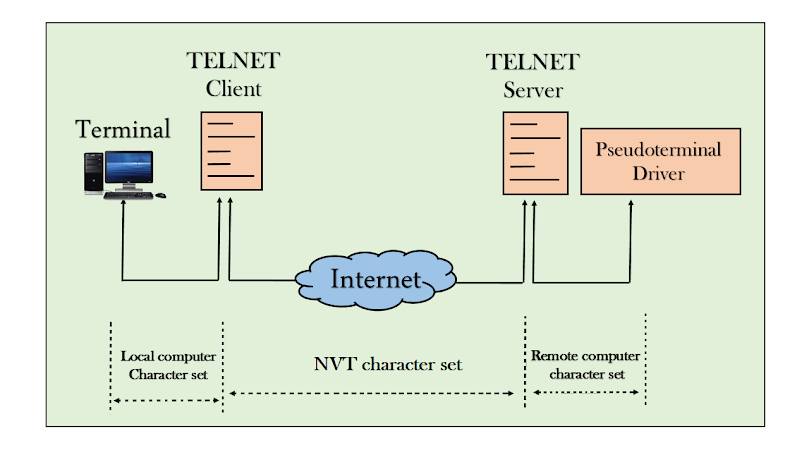TELNET in Computer Networks
In this educational activity, we will cover the application program TELNET in Computer Networks.
TELNET is on a very basic level the short design for TErminal NETwork.It is basically a TCP/IP show that is used for virtual terminal organizations and was essentially proposed by International Organization for Standards(ISO).
It is a comprehensively helpful client/server application program.
This program engages the groundwork of the relationship with the far away structure so the local system starts to appear as a terminal at the far off system.
It is a standard TCP/IP show that is used for virtual terminal assistance.
In direct words, we can say that the telnet licenses the client to sign on to a distant PC. Directly following marking on the client can use the organizations of the far off PC and subsequently can move the results back to the close by PC.
The TELNET was fundamentally arranged while most working structures work in the time-sharing environment. Besides, in this kind of environment, a colossal PC can maintain different clients. Regularly, the correspondence between the PC and client occurs through terminal(It is a mix of control center, mouse, and screen).
TELNET uses simply a solitary TCP/IP affiliation.
Logging
As in the timesharing environment, the clients are a piece of the circumstance reserving a privileges to get to the resources. It is essential to observe that each client has an unmistakable confirmation close by the mystery expression. This client separating evidence predominantly shows that the client is a piece of the system.
To get to the system the client signs in to the structure by the client id.The structure similarly consolidates secret word truly taking a gander at to thwart unapproved permission to the resources of a structure.
The logging framework can be furthermore characterized into two:
Close by sign in
Remote sign in
Neighborhood Log-in
At the point when a client signs in into a close by timesharing structure then it suggested as neighborhood sign in.
The figure gives Local indication in
Whenever the client types at the terminal, then, the keystrokes are recognized by the terminal driver.
The characters are then given to the Operating structure by the terminal driver.
From there on out, the functioning structure interprets the blend of the characters and a short time later summons the ideal application program.
Remote Log-in
Right when a client needs to get to those application tasks or utilities that arrange on to the remote machine then it is implied as remote sign in. In this kind of sign in, the TELNET client/server program generally comes into use.
The add shows the possibility of Remote Log-up
In this, the client on a very basic level sends the keystroke to the terminal driver where the Operating structure simply recognizes the characters and doesn't translate them.
Starting there ahead, the characters are transported off the TELNET client that generally makes an understanding of these characters into the comprehensive individual set that is typically known as Network Virtual Terminal (NVT) characters.
Right after changing over the TELNET client moves them to the TCP/IP show stack.
The message that is as NVT then, at that point, goes through the web and a while later appears at the TCP/IP show stack present at the remote machine.
From there on out, the characters are passed on to the functioning structure which then gives these to the TELNET Server,
The TELNET Server then, changes these NVT characters to the looking at characters that can be gotten a handle on by the Remote PC.
The characters can't be clearly passed to the Operating plan of the distant PC in light of the fact that the remote working system isn't arranged in such a way to get the characters from the TELNET server.
